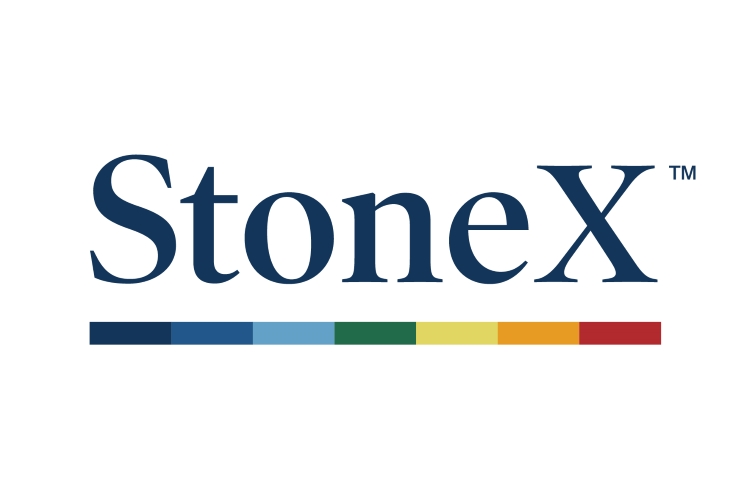A snowball gathering pace and size at an alarming rate, the global ETF industry has grown by almost 10 times since 2010, but at what point will the asset class be large enough to pose structural risks?
European and US ETFs housed around $1.2trn in assets under management (AUM) in 2010, according to data from Statista and State Street, however, today the global industry is on the cusp of breaking the $10trn mark. In fact, this year’s inflows in Europe will probably come close to the entire industry’s AUM 11 years ago.
While participants now hear words like “record” and “unprecedented” bandied round on a daily basis, warnings about the pace of this expansion have been gathering volume for the last five years.
A notable turning point in the discourse on ETF ownership and scale followed a headline-grabbing jab by Alliance Bernstein analyst Inigo Fraser Jenkins in 2016, who dubbed ETFs as “worse than Marxism” in terms of how inefficiently they allocate capital.
This was followed by famed hedge fund manager, founder of Scion Capital and ‘Big Short’ investor Michael Burry telling Bloomberg the growth of ETFs reminded him of the bubble in synthetic asset-backed collateralised debt obligations (CDO) prior to the Global Financial Crash of 2008, because price-setting is driven by massive capital flows rather than fundamental security-level analysis.
Burry’s warning was made back in 2019, a year when the industry had just broken the $4trn mark, less than half of its heights in 2021. More recently, StoneX economist and global strategist Vincent Deluard made a series of observations to a similar effect.
“For now, money will keep flowing into index funds, whether we like it or not,” Deluard said. “At the same time, bubbles, like stars, eventually collapse under their own gravity.”
Indeed, if we take PricewaterhouseCoopers’ assumption the global asset management industry was worth $111trn in 2020 and will rise to $145trn in 2025, then ETFs certainly make up a sizeable chunk of the global sum, and a sudden change of heart by investors resulting in redemptions en masse would certainly be enough to rock the boat.
Premature alarm bells?
However, such an event is unlikely, and like the mutual fund industry, which has been progressively losing ground to ETFs for years, any future decline of ETFs would likely take the form of money transferring to a new vehicle with a new and exciting use case.
For now, Todd Rosenbluth, head of ETF and mutual fund research at CFRA, said concerns about the size and influence of ETFs are currently overblown.
“We are more than a decade away. Money in ETFs would have to double or triple in size for ETFs to drive markets,” Rosenbluth argued. “With the competing forces we have, at least here in the US – direct indexing, active management through securities selection or funds – many things would need to happen.”
Ben Johnson, director of global ETFs and passive strategies research at Morningstar, said the criticisms raised against ETFs resemble those made against mutual funds five decades ago, when professional investors worried newly-entering retail investors would rush for the exit at the slightest signal of stress.
“These concerns are as old as the market and are just being pointed in a new direction, and this direction is often whatever is new and growing quite rapidly and taking market share from the incumbents,” he said.
Johnson also agrees with Rosenbluth, stating that we are a long way from any kind of “dog wags tail kind of scenario” and even if this kind of situation were to come about, discretionary managers still exist to take advantage of any mispricing.
Refuting this, Deluard’s data show the cyclically adjusted Shiller price/earnings ratio of the S&P 500 was steady prior to the arrival of the infamous SPDR S&P 500 ETF Trust (SPY) in 1993; however, since then, its average shot up considerably from near 15x to 38x today.
While Deluard attributed most of this change to the collapse of interest rates and widespread asset-buying by central banks over the past decade, he concluded that passive funds as a whole contributed 27% of this increase in the P/E ratio.
Disagreeing entirely, Johnson said: “Passive investors and index strategies are by definition price takers. I have a difficult time trying to understand how there is a direct link between the growth of index strategies and a very specific increment to Shiller P/E ratios that is directly attributable to that growth.
“Market prices more often than not say more about investor sentiment and investor behaviour than the fundamentals of investing, and that is not going to change because more investors are allocating more of their money to indexed strategies.”
It is also worth noting there are a variety of non-vanilla, market-cap-weighted strategies, such as factor, environmental, social and governance (ESG) and thematic products, meaning not all new ETF money is pouring into the same exposures.
While this might allay some concern around massive ETF ownership of securities in a particular niche, it also means there are more sub-trends with the potential to go out of vogue.
Should the massive flows into something like ESG ETFs suddenly stagnate or reverse, this would have tangible effects for the product class’s main beneficiaries, Deluard noted.
Quiet kingmakers
The surge of ETF assets has also had an impact of political importance: BlackRock, Vanguard and State Street own not just 80% of the ETF market in the US but more significantly, 20% of all large, listed US firms.
With common ownership of US companies by asset managers up from 10% in 1980 to 80% in 2017, Harvard Law School’s John Coates warned that without regulatory intervention, ETFs’ contribution to this dynamic could see “passive” management vehicles create the “greatest concentration of economic control” in our lifetimes.
Morningstar’s Johnson agreed the growing ownership of companies by a few asset managers has concerning implications for corporate governance and deserves closer scrutiny but adds there is some cause for optimism.
“Thankfully, we are seeing movement on that front, with BlackRock announcing it would be opening up the option to its institutional clients to vote using the shares they hold on their behalf.”
Johnson said the significant question is how far this practice can spread. BlackRock is in a fairly unique position given the sheer scale of its institutional client segment (versus Vanguard’s traditionally retail base, for instance), and this gives them the ability to enjoy the kind of early wins that would not be possible for their peers.
Even if investors have to wait some time for direct voting rights to become the norm for institutional clients – and far longer for retail – a recent academic paper titled The Information Advantage of Institutional Common Owners: Evidence from Stock Price Crash Risk argued that common ownership already has a redeeming quality: the ability to stabilise markets.
This quality, the paper found, depends on asset managers’ ownership of large swathes of the market, which allows them to identify whether bad news is a sign of an industry-wide phenomenon or is just specific to an individual company. This, in turn, means they are less likely to bite and sell off on false signals.
Unsettled in small caps
An area where large ETF ownership definitely has not had a stabilising effect is in niche sectors made up of smaller companies which are often targeted by thematic products.
An example of this is the clean energy sector, which, according to Bloomberg Intelligence’s head of ESG and thematic investing EMEA, Adeline Diab, had 72 companies more than 5% owned by wrapped products in July this year, exposing them to “drastic” price swings.
As well as having higher volatility than their peers, clean energy stocks more than 10% owned by ETFs normally fell more than 10% during the March to May period, compared to an average gain of 6% for those less than 1% owned by ETFs during the same period.
“While our clean energy ETF tracker averages 21.5x EV/EBITDA, over half of the top 10 stocks [in terms of ETF ownership] average 55x, reinforcing our view that concentration carries risks that need to be considered to avoid swings that may not be driven by fundamentals,” Diab said.
This was painfully demonstrated by Sunworks, a solar panel company almost 20% owned by ETFs, which saw its valuation jump by 60x in the nine months through January as it entered four ETFs, before crashing down 65% as a market rotation and ETF rebalances took an outsized toll on the firm.
Most of the blame for these dynamics occurring in clean energy was levelled against two of BlackRock’s thematic products, the iShares Global Clean Energy UCITS ETF (INRG) and iShares Global Clean Energy ETF (ICLN), which gathered more than $10bn in new assets in the three months to 22 February.
Unfortunately, Johnson explained, unlike open-ended mutual funds, ETFs cannot refuse new money. Instead, they have to either widen their goalposts to accommodate arriving capital or hope their existing basket of securities has sufficient capacity that incoming flows do not cause the kind of volatility experienced by INRG and ICLN.
However, the process of broadening an ETF’s underlying basket comes with its own risks. In the context of thematics, the issue of what is considered an investable universe of pure-play stocks is crucial.
Rules-based passive ETFs must follow their underlying index’s requirements for size and liquidity, so can have only limited exposure to the smallest companies. Furthermore, ETFs can only invest in listed securities, meaning the role private equity plays in these innovative sectors has to be ignored.
Once a thematic ETF exhausts its pool of pure-play stocks, standard practice is to lump generalised, large-cap companies into the index, which often have limited involvement in the desired thematic exposure and in turn create a watered-down version of the ETF most investors signed up for.
Discussing similar bubble scenarios playing out in the US-listed ARK Innovation ETF (ARKK) and VanEck Junior Gold Miners ETF (GDXJ), Johnson said these kinds of issues are not caused by the ETF wrapper itself but rather the underlying index or manager – depending on whether a product is passively or actively managed.
This was certainly the case for INRG, ICLN and their underlying index provider, S&P Dow Jones Indices. Over the course of two consultations, the products’ mandates were entirely overhauled and their baskets grew from 30 to 82 constituents.
Strangely, these now include unspecialised large-cap stocks such as Drax Energy and companies generating up to 20% of their revenues from thermal coal – which is odd considering there were already 255 unique clean energy stocks held by clean energy ETFs to choose from in March, according to Bloomberg Intelligence.
Overall, this points to a conclusion made by many in the industry: most of the issues raised by large ETF ownership are problems noticed in ETFs, not problems specific to the product structure itself. Avoiding governance issues and market volatility are important goals, but ETFs are ultimately just a means of ringfencing a group of securities. It is up to product issuers, end investors and regulators to not be complacent about the structural effects the growing support for the wrapper might have.
This article first appeared in ETF Insider, ETF Stream's new monthly ETF magazine for professional investors in Europe. To access the full issue,click here.










